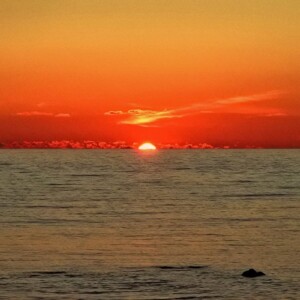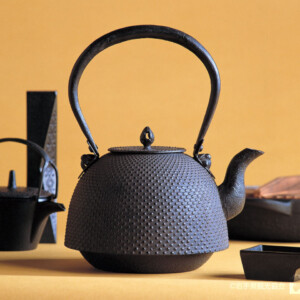
[Akita Prefecture] What is Hirafuku Hyakuho? Detailed information on works and places where they can be viewed
table of contents
Many people know that Momoho Hirafuku is famous as a painter born in Akita Prefecture, but many people may not know exactly what kind of works he left behind.
In this article, we will introduce in detail Momoho Hirafuku's works, from the content to where you can view them.
Who is Hirafuku Momoho?
Momoho Hirafuku was born in 1877 in Kakunodate, Akita Prefecture, as the fourth son of Hoan Hirafuku, a Japanese painter.
He began learning painting from his father in 1890, but unfortunately Hoan Hirafuku passed away in December of that year.
However, Momoho Hirafuku received support from the supporters of Hirafuku Hoan and moved to Tokyo, and in 1894 became an apprentice to Gyokusho Kawabata, a Japanese painter and professor at the Tokyo School of Fine Arts.
Afterwards, while creating works that combined naturalism and classical music, he became friends with Sachio Ito, who can be said to be a central figure in the tanka magazine Araragi, and began to work as a poet as well.
Momoho Hirafuku passed away in 1933 after leaving behind numerous works as a Japanese painter and poet.
About Momoho Hirafuku's works
Momoho Hirafuku achieved great success in two areas: as a Japanese painter and as a poet, but what kind of works did he leave behind in each field?
I will introduce them separately into paintings and tanka.
painting
Momoho Hirafuku's works have won numerous prizes at public art exhibitions such as the Bunten and Teiten, as well as group exhibitions such as the Nangenkai Exhibition. is famous as one of the few paintings by Momoho Hirafuku that uses Mt. Fuji as its subject.
There are two ``Drawings of Mt. Fuji,'' one depicting Mt. Fuji rising white against a gray sky, and the other depicting Mt. Fuji with its blue mountain surface wrapped in a sea of white clouds and a snow cap visible.
Even though the subject is the same, in the former, the gentle shape of Mt. Fuji and the expression of hazy clouds give a sense of anxiety, while in the latter, the appearance of Mt. Fuji, the peak of which can be seen even in a sea of white clouds, gives a sense of hope. It has become a painting.
There are also many other paintings that remain, such as ``Yu Yi'', which was a special selection at the Bunten, and ``Fugui Flower Drawing'', which depicts two elegant red and white peonies, so those who are interested should take a look.
Tanka
Momoho Hirafuku was active as a poet of the Araragi school and left behind a collection of poems called ``Kanchiku.''
In addition, the following two poems are engraved on the ``Hirafuku Sensei Monument'', which was erected in 1939 to commemorate the 7th anniversary of Hirafuku Hyakuho's death.
I left the country for the first time in the year to see the flowing river.
The buds will burst into bloom at once, and you might be able to enjoy the ducks in the bright spring of Michinoku.
The first song expresses the deep feeling that I came to Tokyo when I was young, and now I feel old just by looking at the river.
The second song vividly expresses the bright hope that spring brings in Michinoku, where plants sprout in an instant.
It can be said that this is a wonderful tanka that is typical of Momho Hirafuku, who loved nature.
How can I appreciate Momoho Hirafuku's works?
Where can I see the many paintings left behind by Momoho Hirafuku?
The museums that house Hirafuku Momoho's paintings are as follows.
- Kakunodate Town Hirafuku Memorial Museum of Art
- Akita Prefectural Museum of Modern Art
- Akita City Senshu Art Museum
- Hokkaido Museum of Modern Art
- Fukushima Prefectural Museum of Art
- National Museum of Modern Art, Tokyo
- Tokyo National Museum
- Setagaya Art Museum
- Ome City Museum of Art
- Odakyu Art Museum
- National Museum of Modern Art, Kyoto
- Kumamoto Prefectural Museum of Art
If you are interested, please visit the museums in each region.
summary
Momoho Hirafuku was born in Kakunodate-cho, Akita Prefecture, and achieved success as both a Japanese painter and a poet. Even now, many of his works are stored in museums across Japan, and they are known to entertain people's hearts. I did.
If you are interested in Hirafuku Hyakuho, please refer to this article and experience many of his works.


![Hot springs gush out in a place where there are no volcanoes! "Yuzawa Geopark" where you can see the mystery of the earth up close [Akita Prefecture] 4550228_m](https://jp.neft.asia/wp-content/uploads/2023/02/4550228_m-150x150.jpg)
![The popular game "Matagi" started in Kitaakita City! [Akita Prefecture] matagi](https://jp.neft.asia/wp-content/uploads/2024/04/matagi-150x150.jpg)
![Yurihonjo City, where Honjo, Kameda and Yajima domains were intersected between the Kubota and Shonai domains [Akita Prefecture] FF2C8AAA4350E7E179F97F97B38B3A2302F-1](https://jp.neft.asia/wp-content/uploads/2024/04/ff2c8aaa4350e7e179f97f38b3a2302f-1-150x150.jpg)
![Why do Nama balds take knives to tempt people - Oga Peninsula and the Legend of the Demon (1) [Akita Prefecture] New Year's Eve Event 001 @OGA City](https://jp.neft.asia/wp-content/uploads/2024/10/00bf8a32651033edd1191ba2d04c6f61-150x150.jpg)
![Akita Cedar, which has been close to people's lives since ancient times, is a close look at the reasons and secrets [Akita Prefecture] Ninfu Mizusawa Cedar Rare Population Protection Forest (Noshiro City, Akita Prefecture)_Travel Tohoku](https://jp.neft.asia/wp-content/uploads/2025/05/792bcbe7d9fd514753f4deeaca3de33f-150x150.jpg)
![The submerged forests of Lake Akiogi can only be seen from May to June! A mysterious sight with trees floating in the lake [Akita Prefecture] Submerged forest of Lake Akifan](https://jp.neft.asia/wp-content/uploads/2023/07/IMG_5033-150x150.jpg)
![[Chokaisan and Tobishima Geopark: Yurihonjo Edition] A strata from when Japan was the Eurasian continent can be seen B5C46A18BC0CC0CC0E9AD08084EAA5B](https://jp.neft.asia/wp-content/uploads/2024/04/b5c46a18bc0cc79de0e9ad08084eaa5b-150x150.jpg)
![Is Nama bald real? Traces of demons remaining throughout the Oga Peninsula - Oga Peninsula and the Legend of Demons (2) [Akita Prefecture] 1. Namahage Shiba Lighting Festival](https://jp.neft.asia/wp-content/uploads/2024/09/1076350e647a6476081bad8cd4fd6159-150x150.jpg)











